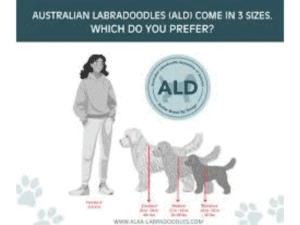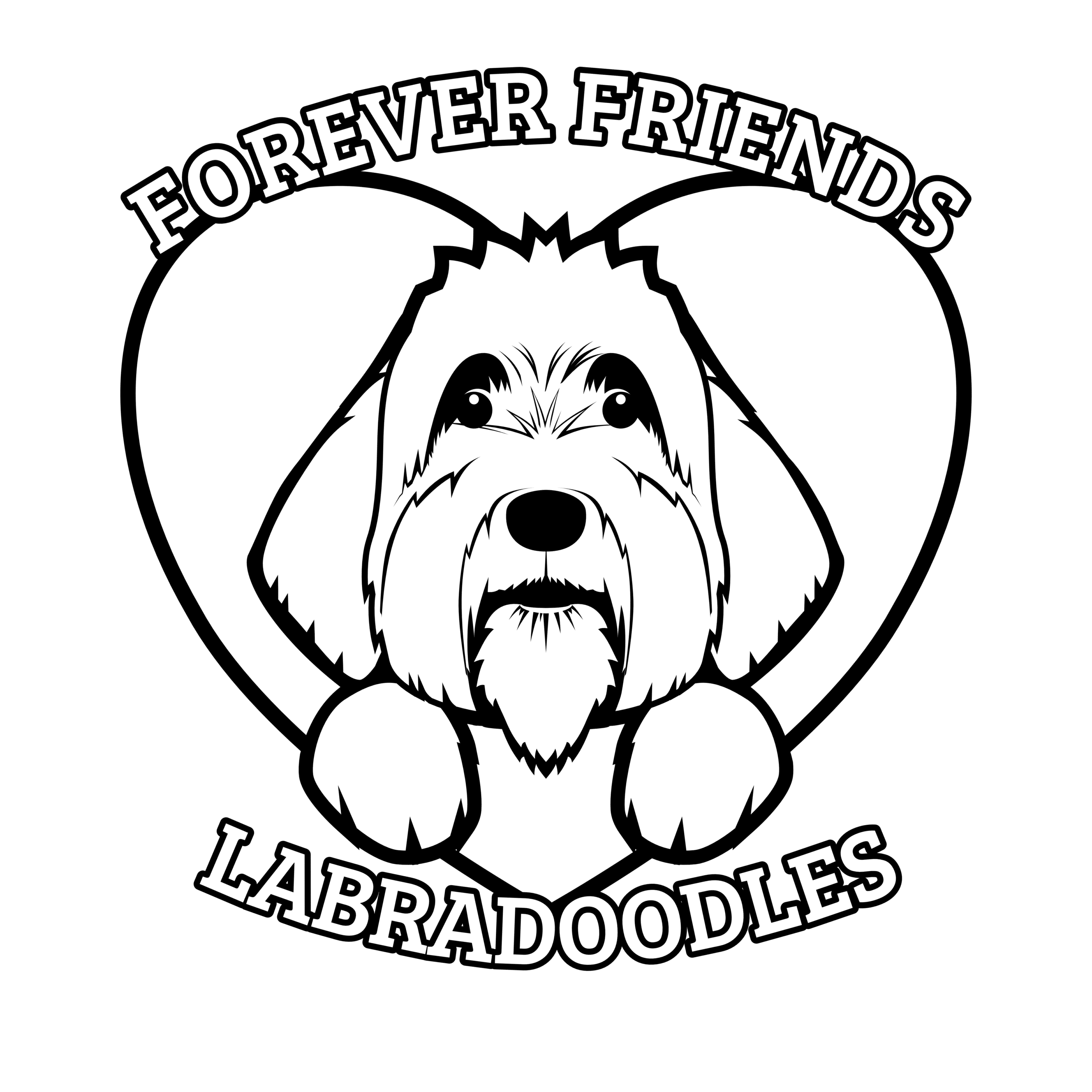Australian Labradoodles
How It All Began.....
“Discover the Australian Labradoodle — Loving, Loyal, and Amazingly Trainable”.
 The Story of the Australian Labradoodle-the “original” doodle!
The Story of the Australian Labradoodle-the “original” doodle!
Every great breed has a story, and the Australian Labradoodle’s tale begins with a very special purpose: to help people.
Back in the 1980s in Victoria, Australia, a man named Wally Conron was working with the Royal Guide Dog Association. One day, he was asked to create a guide dog for a woman whose husband had severe allergies. Wally thought, “What if I combine the gentle, intelligent Labrador Retriever with the low-shedding, clever Poodle?”
The result was the first Labradoodle—a smart, loving dog with the potential to be allergy-friendly. But there was one challenge: first-generation Labradoodles were unpredictable. Some had coats that shed, others didn’t, and their personalities could be all over the map.
 A New Vision in Australia
A New Vision in Australia
A group of dedicated Australian breeders saw the potential in this cross and dreamed bigger. They wanted to create not just a mix, but a reliable, family-friendly breed with consistent coats, great health, and steady, people-loving temperaments.
So, beginning in the late 1980s and into the 1990s, these breeders carefully added other breeds into the foundation lines:
English and American Cocker Spaniels for their warm, affectionate personalities.
This wasn’t random mixing—it was intentional, thoughtful breeding to shape a dog who could truly be a forever friend.
 From Vision to Reality
From Vision to Reality
Through this careful, multi-generational approach, the Australian Labradoodle was born. With its joyful temperament, allergy-friendly coat, and eagerness to please, this breed quickly became a favorite not just in Australia, but around the world.
Families loved them. Therapists and educators welcomed them. And before long, the Australian Labradoodle was recognized by organizations like the ALAA (Australian Labradoodle Association of America).
 The Heart of the Breed
The Heart of the Breed
Today, the Australian Labradoodle is celebrated as more than just a cross between a Labrador and a Poodle. It’s a carefully cultivated breed with roots in Australia, developed to be healthy, gentle, intelligent, and above all—family-oriented.
At Forever Friends Labradoodles, we carry forward that same vision: raising puppies who are not only adorable and allergy-friendly, but also ready to become a beloved part of your family’s story.
*** The information below was taken from the Australian Labradoodle Association of America. www.alaa-labradoodles.com
The carefully bred, low- to no-shedding coat of an Australian Labradoodle makes them an allergy-friendly dog, but no dog is truly hypoallergenic. Australian Labradoodles are not the same as other “doodles”.
Currently there are 3 size ranges of the breeds, defined by measuring from the ground to the wither, the highest point on the dog’s shoulder blades.
Miniature: Between 14 and 16 inches (35 to 42 centimeters).
Medium range: Between 17 and 20 inches (43 to 52 centimeters).
Standard range: Between 21 and 24 inches (53 to 63 centimeters).

F1: The “F” stands for “filial generation”. “F1” means “first generation” and is a common scientific term. This, in the Labradoodle breed, is the coding for first-cross, purebred Poodle to purebred Labrador Retriever. The results are mixed, as this is not the breeding of two “like” dogs, or dogs that resemble each other. F1 Labradoodles typically are moderate- to low- shedding and have a sparse-hair to fleece coat.
F1B: The additional “B” refers to backcross — an F1 Labradoodle, as defined above, bred (or backcrossed) to a purebred Poodle. Again, the results are mixed, as this is not the breeding of two “like” dogs. F1B Labradoodles typically are low- to non-shedding if both parents non-shedding (or as much as any dog can be non-shedding) and often have a hair or fleece coat.
Australian Labradoodle: The Australian Labradoodle carries the DNA of the Labrador, Poodle and Cocker Spaniel (American or English). The resulting offspring share characteristics, though some pairings of parent dogs will produce a more mixed litter. An Australian Labradoodle can be created by crossing a Poodle to another Australian Labradoodle, a Cockapoo to a Labradoodle, a Labradoodle to a Cocker Spaniel and the like, resulting in the three-breed combination. Australian Labradoodles and Multigen Australian Labradoodles typically have a non-shedding coat (again, as much as any dog can be non-shedding) if both parents are non-shedding.
Australian Labradoodles are fun and active dogs that require daily exercise. This can be anything from simple morning and evening walks or a creative obstacle course, as Australian Labradoodles excel at agility training.
Australian Labradoodles need to be groomed regularly, to prevent its coat from becoming tangled and matted. They are low odor and should be low- to no-shedding.
*** information taken from the Australian Labradoodle Association of America website. www.alaa-labradoodles.com
